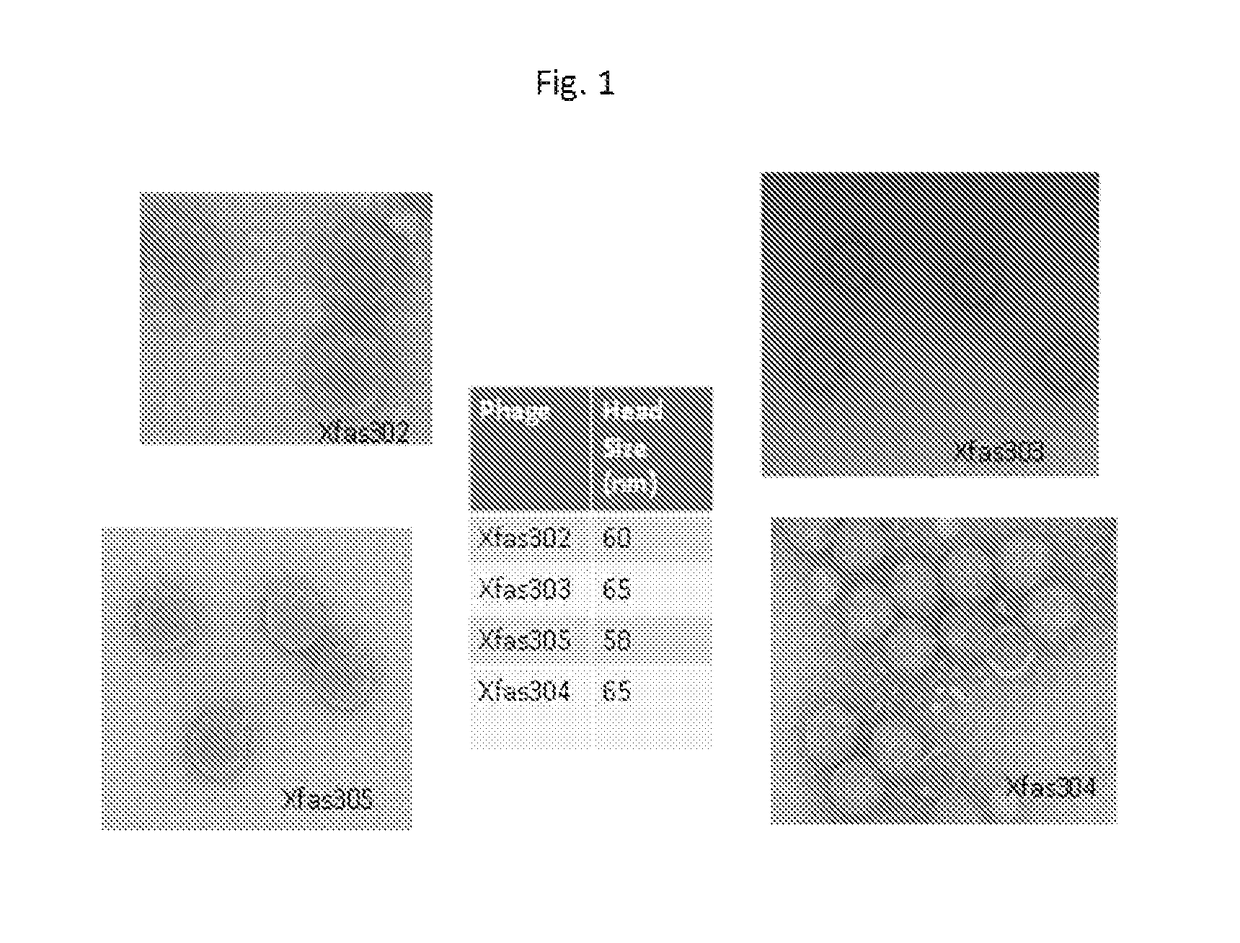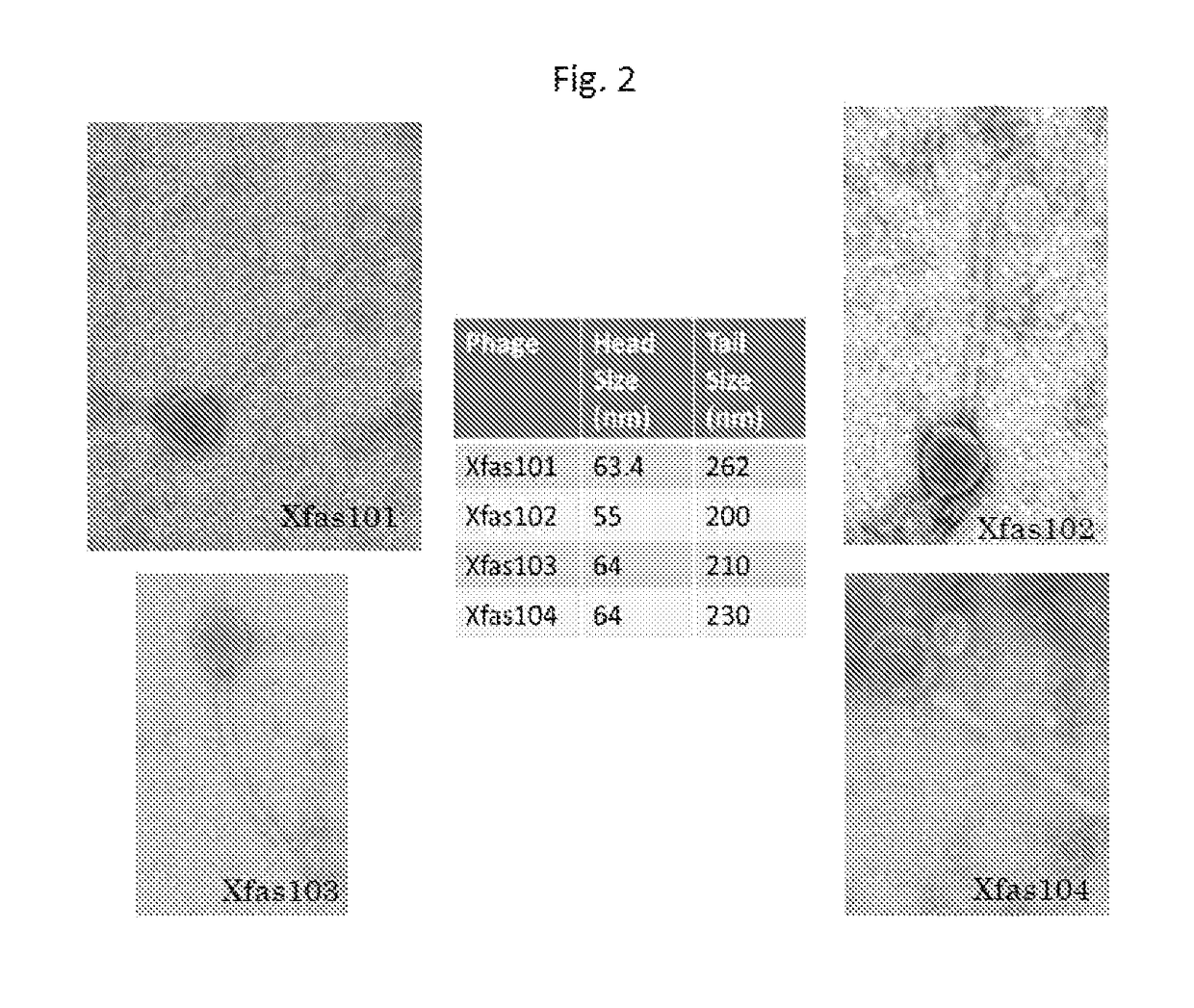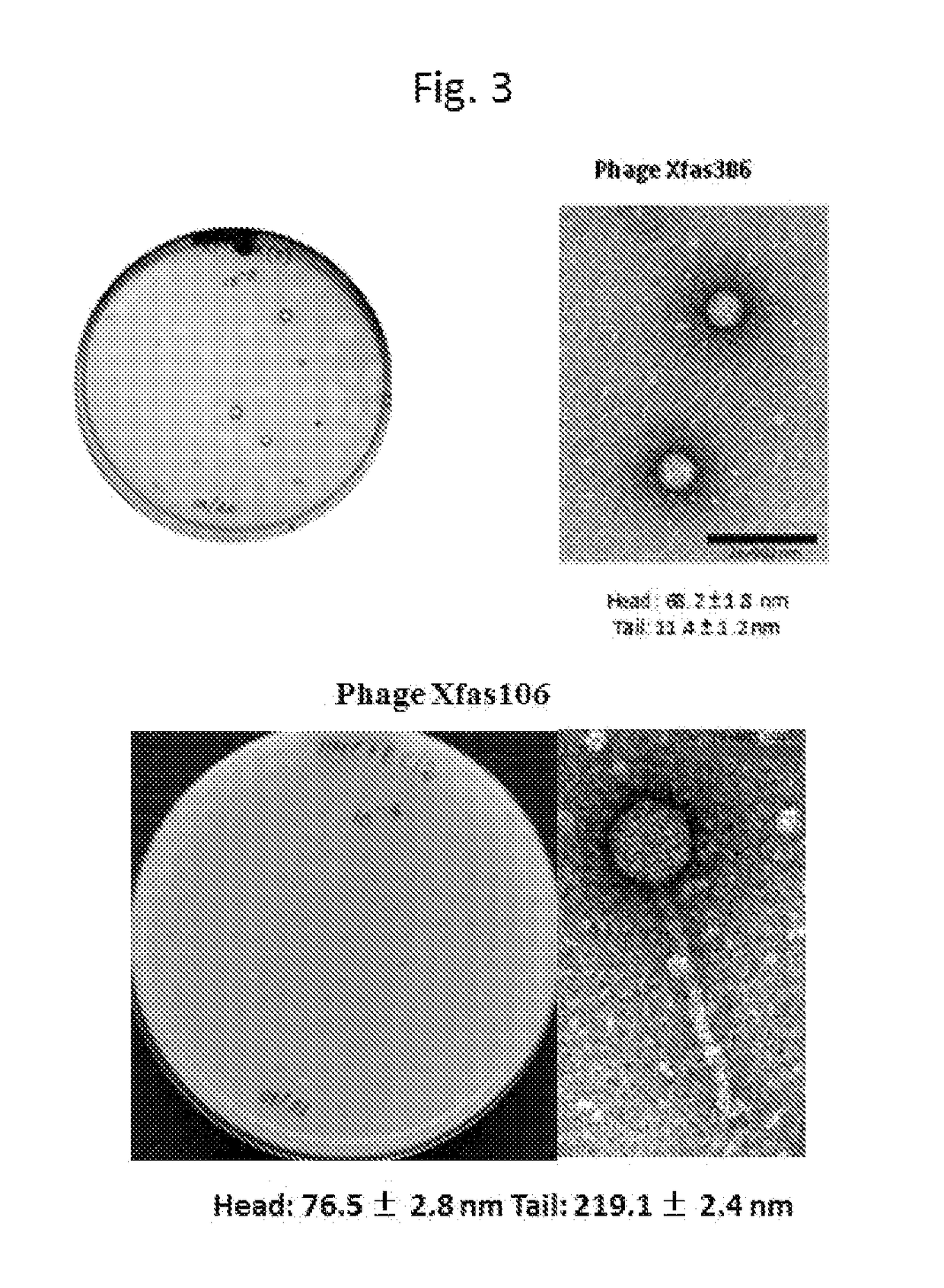Method for treatment and control of plant disease
a plant disease and disease technology, applied in the field of plant pathology, can solve the problems of large crop loss, deleterious effects on the plant, poor growth, etc., and achieve the effects of preventing or reducing symptoms
- Summary
- Abstract
- Description
- Claims
- Application Information
AI Technical Summary
Benefits of technology
Problems solved by technology
Method used
Image
Examples
example 1
Media, Culture Conditions and Bacterial Strains
[0086]This example describes the isolation, propagation, and the morphological and genomic characterization of bacteriophage virulent to X. fastidiosa and Xanthomonas species. The medium used in this study differs from standard medium used to grow X. fastidiosa, which allows rapid growth but affects the ability of the bacteriophage to infect. PW broth medium as modified by Sherald et al. (Plant Disease 67:849-852, 1983) designated PW-M, was used for growth of X. fastidiosa isolates, except that the final bovine serum albumin content was 0.3% as modified by Hill and Purcell (Phytopathology 85(12):1368-1372, 1995). For solid medium (PW-MA) and soft agar, the PW-M broth was amended with 15 g / l and 7.5 g / l, respectively, of Plant Cell Culture Tested agar (Sigma). The complex medium TN broth (TNB) was used for routine maintenance of non-X. fastidiosa cultures. Solid medium (TNA) was identical, with the exception that it lacked KNO3 and was s...
example 2
Processing of Plant Samples and Isolation of Bacteria
[0087]Plant samples of Vitis vinifera, V. mustangensis, and weeds were obtained from vineyards in Brazos County and Washington County, Texas. Rice (Oryza sativa) plant tissue and weeds from rice fields were obtained from Jefferson County and Wharton County, Texas. Rice seed samples were obtained from the Texas AgriLife Research Center in Beaumont, Tex. Samples from rose plants (Rosa spp.; Knock Out) and jalapeño (TAM-mild; Capsicum annuum) were obtained in Brazos County, Texas. To obtain plant extracts, 10 g of plant tissue were ground using a mortar and pestle in 50 ml bacteriophage buffer (P-buffer; 50 mM Tris-HCl pH 7.5, 100 mM NaCl, 8 mM MgSO4), vortexed, and strained through a double-layer of cheesecloth to remove large particles. The extract was then dilution plated to both PW-M and TNAC for the isolation of X. fastidiosa and non-X. fastidiosa bacteria, respectively, and incubated at 28° C. Plates were evaluated for growth d...
example 3
Isolation, Purification and Titration of Bacteriophage from Plant Samples
[0088]To obtain plant tissue filtrates (PTFs) the clarified plant extract was centrifuged (10,000×g, 10 min at 4° C.), twice and the tissue extract were filtered through a 0.22 μm filter (Supor, Pall Life Sciences). The presence of bacteriophage in PTFs was directly determined by spotting 10 μl of a 10-fold dilution series on overlays of a panel of X. fastidiosa and Xanthomonas species hosts and observing for zone or plaque formation after lawn development (6-7 days for X. fastidiosa isolates and 18 h for Xanthomonas species isolates). Alternatively, bacteriophage were enriched from the PTFs by adding 1 ml of each filtrate to 20 ml of an actively growing culture of an X. fastidiosa isolate (4 day culture; A600=0.30) or an A600=0.25 (4 h) culture of a Xanthomonas species host. After 72 h or 24 h of growth for the X. fastidiosa or Xanthomonas species enrichment, respectively, the cultures were centrifuged (10,000...
PUM
| Property | Measurement | Unit |
|---|---|---|
| diameter | aaaaa | aaaaa |
| diameter | aaaaa | aaaaa |
| diameter | aaaaa | aaaaa |
Abstract
Description
Claims
Application Information
 Login to View More
Login to View More - R&D
- Intellectual Property
- Life Sciences
- Materials
- Tech Scout
- Unparalleled Data Quality
- Higher Quality Content
- 60% Fewer Hallucinations
Browse by: Latest US Patents, China's latest patents, Technical Efficacy Thesaurus, Application Domain, Technology Topic, Popular Technical Reports.
© 2025 PatSnap. All rights reserved.Legal|Privacy policy|Modern Slavery Act Transparency Statement|Sitemap|About US| Contact US: help@patsnap.com



